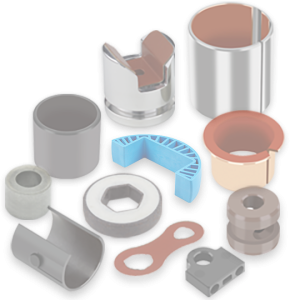Sleeve bearings consist of a metal, plastic or fiber-reinforced composite sleeves that reduce vibrations and noise by absorbing friction between two moving parts using a sliding motion.
Sleeve bearings offer several advantages, including lower cost, less maintenance, greatly reduce noise at low speeds and easier installation. Sleeve bearing performance is also marked by a higher load capacity, especially shock load resistance due to their greater contact zone. Sleeve bearings with a conformal liner compensate for misalignment issues and vibration damping, these one-piece design low-friction bearings reduce housing dimensions and weight by having a thin wall section.
Sleeve bearings can be made from bronze, steel or stainless steel. Brass bearings and plastic sleeve bearings are also manufactured for certain applications. A common type of sleeve bearing that works well in applications requiring constant lubrication is bronze sleeve bearings, which sometimes contain lubricant plugs (PTFE or graphite) to help with lubrication issues. Another sleeve material used for light to medium applications, called oil impregnated bronze sleeve bearings, contains pores that absorb oil, which is released under applied force and then reabsorbed back into the bearing once the force subsides.
Two common designs of sleeve bearings are flanged and cylindrical bearings. Flanged sleeve bearings consist of a protruding flange at one end of the sleeve that provides a bearing surface for an axial load, while a cylindrical bearing has straight outside and inside diameters and is flush inside the housing.





